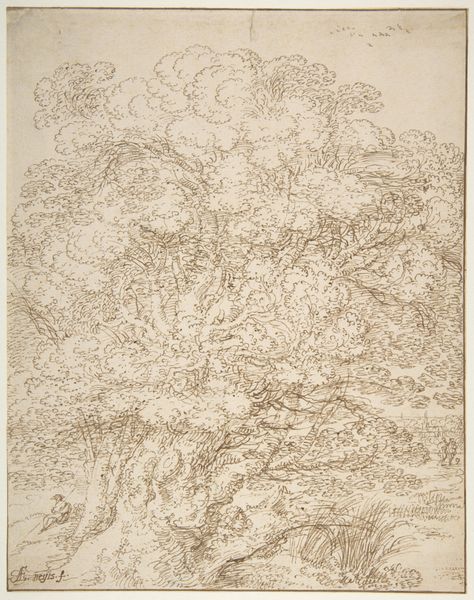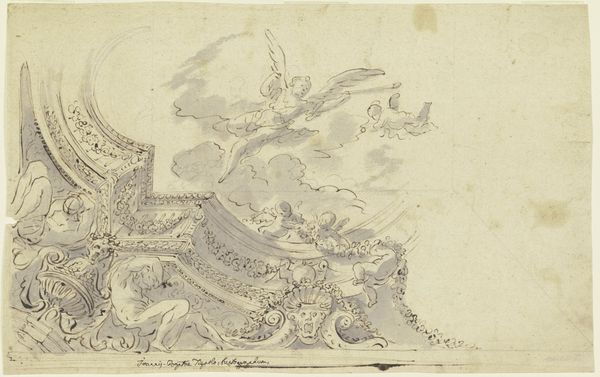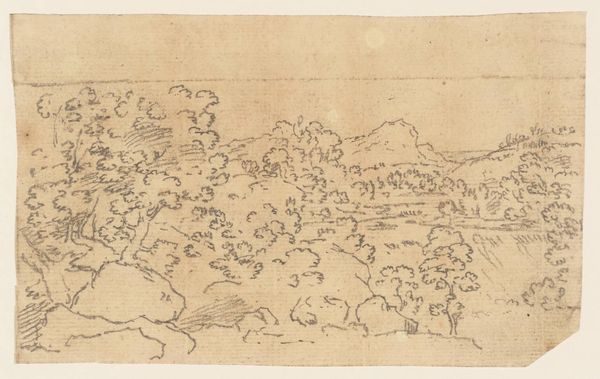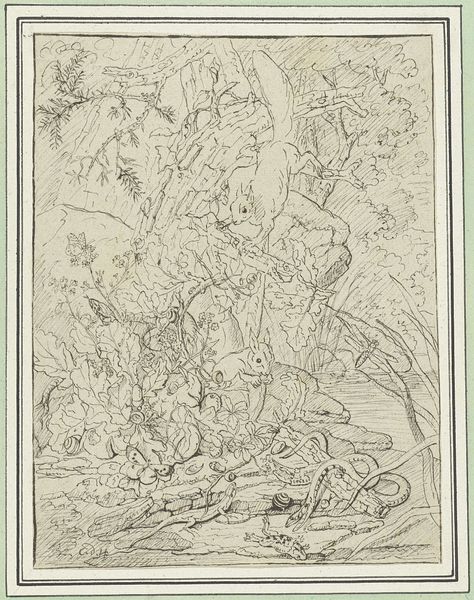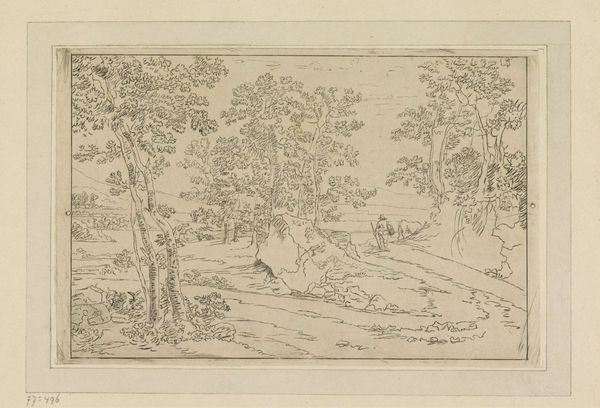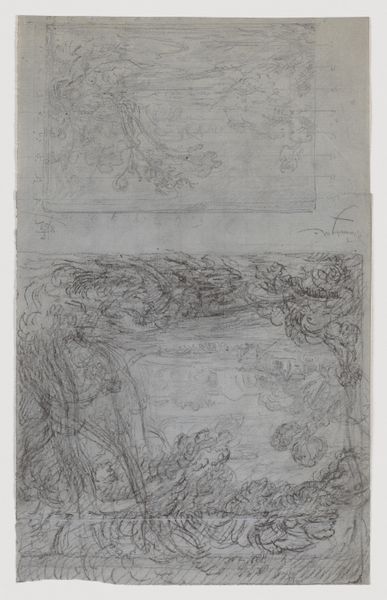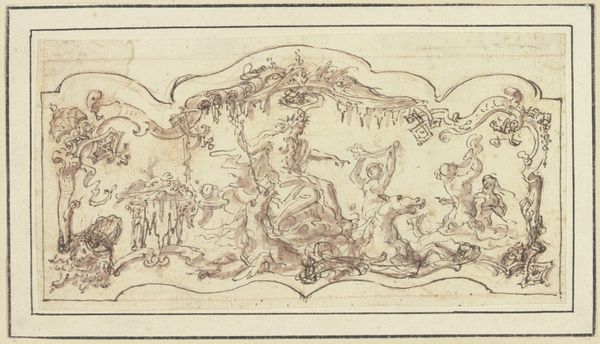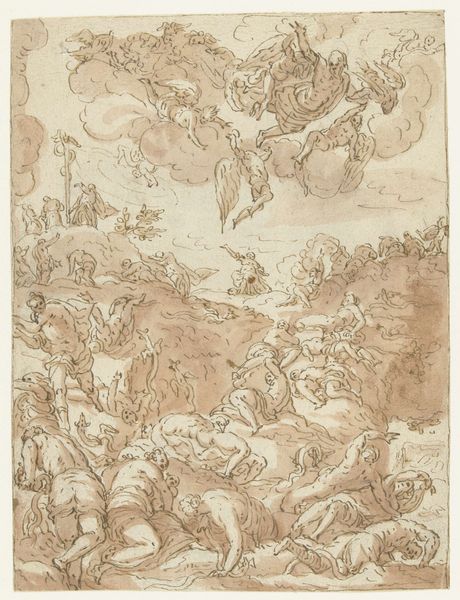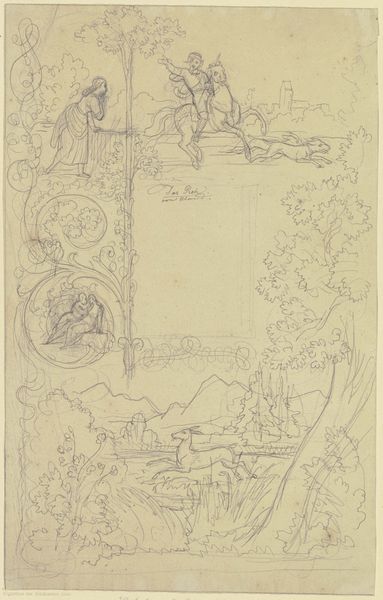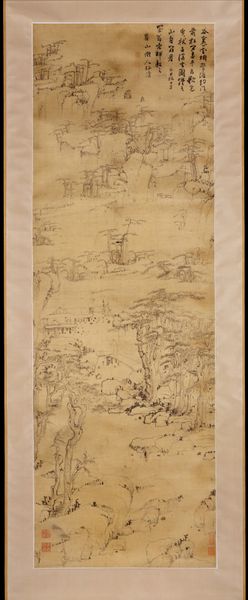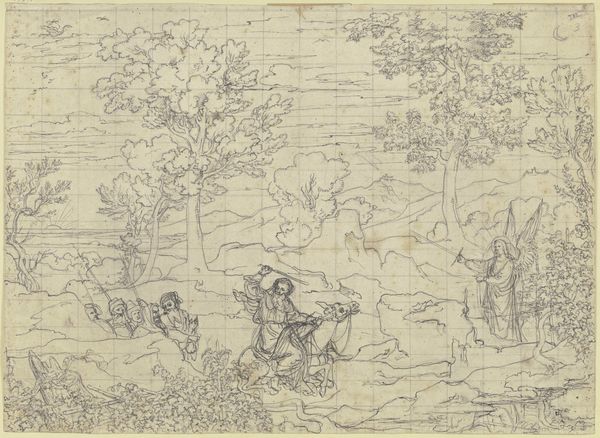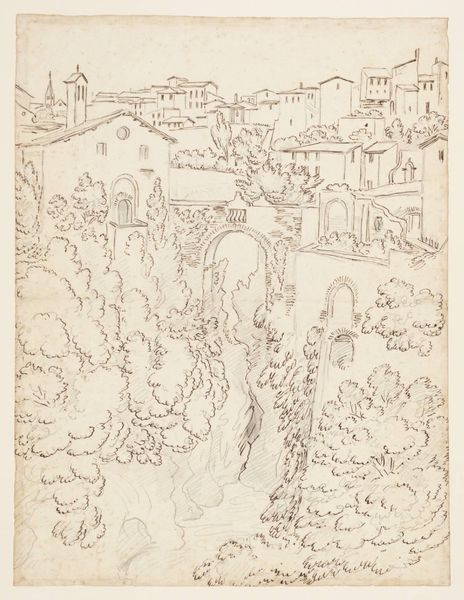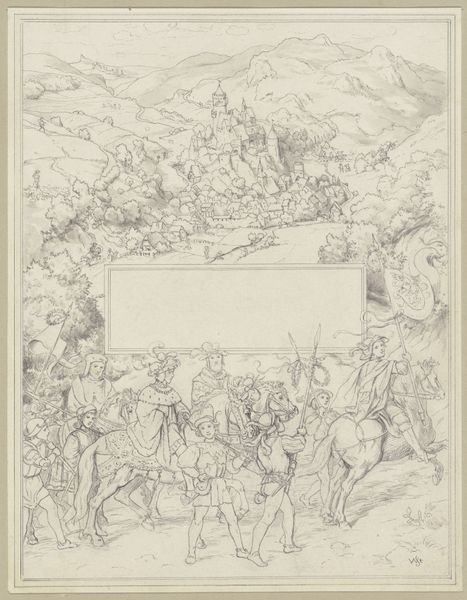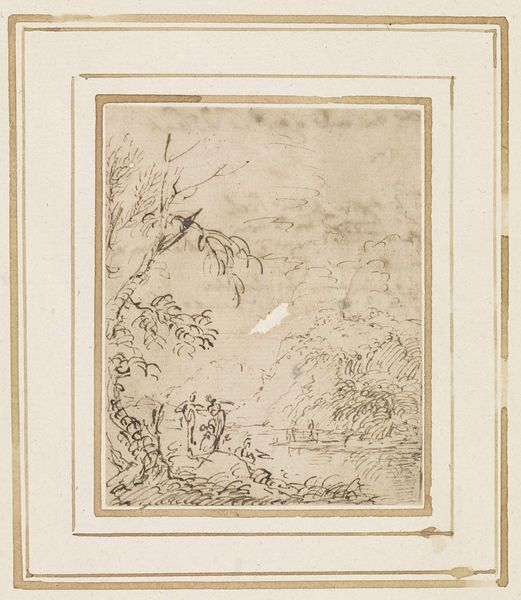
drawing, ink
#
drawing
#
ink drawing
#
baroque
#
landscape
#
ink
#
genre-painting
Dimensions: height 353 mm, width 275 mm
Copyright: Rijks Museum: Open Domain
Curator: At first glance, there is something whimsical and delicate in Jan Weenix's ink drawing, Hoenderhof. Editor: I'd say its most striking feature is its ethereal quality; the ink is so light, it almost seems to float off the page. How can you orient me to some of its historical context? Curator: Created sometime between 1650 and 1719, this piece uses a rather economic style of Baroque landscape, with fine strokes. I notice the almost industrial speed Weenix adopts with his tool; a quill perhaps. He swiftly defines the contours, volumes, and details, which seem perfectly calculated. I think it is tempting to examine Weenix's material conditions—the source of his ink, perhaps? Editor: Indeed, I'm curious, what socio-cultural elements are being reflected within? For example, who was this created for, what would it be used for? The landscape has elements of grandeur, architectural vestiges of times of greater glory in contrast with the 'ordinariness' of the common hen—how was Weenix playing with these symbols? Curator: Well, during the Baroque period, there was an emphasis on the ornamental—a decadence perhaps indicative of increasing luxury and mercantile capitalism; something reflected here perhaps in Weenix’s rather privileged material choices. The exotic bird and architectural remains signify luxury, which becomes attainable due to mercantile routes of the early modern era. But also, notice how that grandeur that you pointed out is fading... Perhaps Weenix even captures the inevitable decay brought forth by all new modes of consumption? Editor: I’d be inclined to say that he uses it to critique, to juxtapose class, luxury, decay, and a rural scene in an ink landscape, offering his commentary about a Netherlands' identity crisis of the time. A true marriage of both natural and manmade imagery! Curator: Ultimately, it offers us an intricate look at the complex relationship between landscape, materiality, and perhaps even capitalist consumption through the simple medium of ink on paper. Editor: And its beautiful and poignant dialogue allows us to interrogate early modern history through a variety of means. I’d say this artwork proves the critical force of art.
Comments
No comments
Be the first to comment and join the conversation on the ultimate creative platform.
